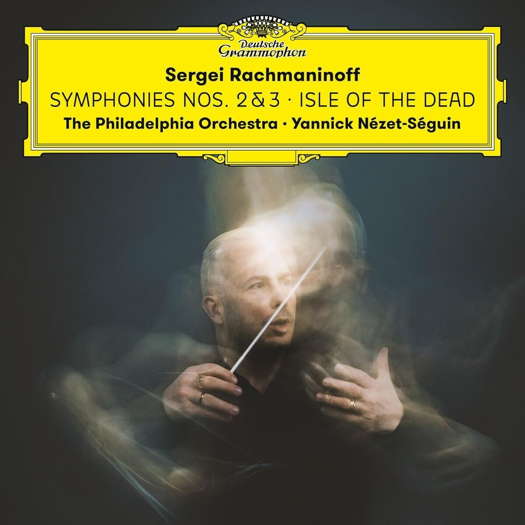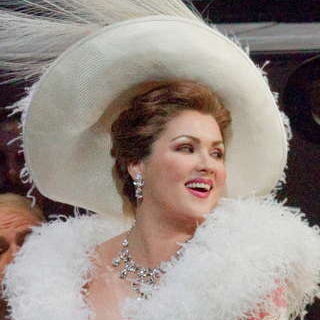 WORD SEARCH: Can you solve Allan Rae's classical music word search puzzles? We're currently publishing one per month.
WORD SEARCH: Can you solve Allan Rae's classical music word search puzzles? We're currently publishing one per month.

Beyond Recommendation
GERALD FENECH welcomes Rachmaninov orchestral music from the Philadelphia Orchestra and Yannick Nézet-Séguin on Deutsche Grammophon
'Intensity, ebullience, vibrancy, passion and realism are the ingredients of these performances ...'
2023 must be considered as the golden year of Russian composers' anniversaries. Those of Alexander Borodin (190th of birth), Pyotr Ilyich Tchaikovsky (130th of death), Sergei Rachmaninov (150th of birth and 80th of death) and Sergei Prokofiev (70th of death) readily come to mind. But one cannot deny that this year must be dedicated to Sergei Rachmaninov 'par excellence', if only for the reason that we are commemorating both his birth and death anniversaries. A good number of CDs of his arresting music have already made their mark, but this Deutsche Grammophon issue, Sergei Rachmaninoff: Symphonies 2 & 3; Isle of the Dead, is one of the finest, if not the finest so far, so I welcome it with zealous wholeheartedness.
Now let's delve into this superlative programme. Following the disastrous 27 March 1897 St Petersburg world premiere of the First Symphony, Sergei Rachmaninov plunged into a profound depression. The crisis that threatened to destroy the composer's musical career lasted for three years. A breakthrough finally came in 1900. On advice of relatives he consulted Dr Nikolai Dahl, a psychiatrist who used hypnosis in the treatment of his patients. The consultations with Dr Dahl were an extraordinary success. Indeed, Rachmaninov experienced a miraculous resurgence of confidence and he immediately began to compose his Second Piano Concerto (1901), a work he dedicated to Dr Dahl. Rachmaninov even plucked enough courage to attempt another symphony.
In the fall of 1906, the composer and his family moved from Russia to Dresden, a relocation that offered him the solitude he needed to devote himself entirely to composition. In October, Rachmaninov began his Second Symphony and finished the first draft on New Year's Day 1907. After revising the score, he conducted the premiere in St Petersburg on 8 February 1908. The performance was a rousing success with audience and critics alike and this enabled the composer to finally bury the disappointment of his First Symphony.
The Second Symphony proved to be immensely popular during the composer's lifetime, and remains one of his most beloved pieces. The rich orchestration and passionate melodies assure its status among the finest Russian symphonies of the late Romantic era. The work is in four inspired movements. The first begins with an extended Largo opening with a motif that will appear in various guises throughout the symphony. This is followed by a lively Allegro which keeps the confident mood of the music flowing with impressive imagination. The second movement is a vibrant Scherzo culminating in the brass's chorale transformation of the opening bars. The intoxicating Adagio, maybe the most beautiful music written by Rachmaninov, is based upon two melodies presented at the outset. The final Allegro vivace recalls music from the previous three movements which eventually lead to an exhilarating conclusion.
Listen — Rachmaninov: Allegro vivace (Symphony No 2)
(4864775 track 6, 0:00-0:56) ℗ 2023 Deutsche Grammophon GmbH :
The catastrophic Russian Revolution and World War I forced Rachmaninov to emigrate to the United States, where he finished with an intense performance schedule and little time for composition. Back in Europe in 1936, the composer completed his Third Symphony, which was inspired by one of his most celebrated piano works, the Paganini Rhapsody.
The Symphony premiered on 6 November of that same year under Leopold Stokowski, but somehow it never achieved the fame of his previous work. Rachmaninov regarded his final symphony fondly and even recorded it in 1939 with the Philadelphia Orchestra, an ensemble that has strong ties with the composer. Indeed, it premiered several of his concert works, and this disc seems to want to continue this relationship, as all three works on this programme are performed by the Philadelphia Orchestra.
The Third Symphony took several years to make lift-off but in recent times the work is starting to establish itself in the concert halls. The opening motif is most important as it later dominates the second half of the finale. Following this, the movement continues with two contrasting themes: sorrow and nostalgia, expressed by the woodwinds, and a gracious romantic melody presented by the cellos.
Listen — Rachmaninov: Lento - Allegro moderato - Più vivo (Symphony No 3)
(4864775 track 7, 2:05-2:49) ℗ 2023 Deutsche Grammophon GmbH :
In the second movement Rachmaninov presents a combination of adagio and scherzo, thus creating two inner movements. The calming theme is played by solo horn followed by the solo violin. The scherzo then takes its turn with the strings to create a theatrical atmosphere. The lovely finale radiates the energy of Russian dance music.
Listen — Rachmaninov: Allegro (Symphony No 3)
(4864775 track 9, 0:00-0:55) ℗ 2023 Deutsche Grammophon GmbH :
Finally a lush melodic theme brings the work back to high romanticism with a grand conclusion.
The marvellously atmospheric symphonic poem The Isle of the Dead was composed between January and March 1909. The piece was inspired by a black and white reproduction of Arnold Bocklin's painting of the same title which Rachmaninov saw in Paris in 1907. The work premiered on 18 April 1909 in Moscow under the composer's baton. The music is hypnotic, suggesting the sound of oars as they meet the waters on the way to the Isle. The slowly heaving and sinking music could also be interpreted as waves, and, as in several works, quotes the 'Dies Irae' plainchant, an allusion to death. In contrast to this theme of death, the composer skilfully depicts breathing, creating a holistic reflection on how life and death are intertwined.
Listen — Rachmaninov: The Isle of the Dead
(4864775 track 10, 20:38-21:33) ℗ 2023 Deutsche Grammophon GmbH :
There is no doubt that this exceptional music is in the DNA of Yannick Nézet-Séguin and his Philadelphia Orchestra players, and the way they move deftly from one idea to another is all so naturally convincing. These three musical planets are so very different one from the other, but they all belong to the Rachmaninov galaxy which is a continuous voyage of discovery. Intensity, ebullience, vibrancy, passion and realism are the ingredients of these performances which make this issue one of the most gripping recordings this team has yet produced. What can I say other than this gem is beyond recommendation.
Copyright © 18 August 2023
Gerald Fenech,
Gzira, Malta




